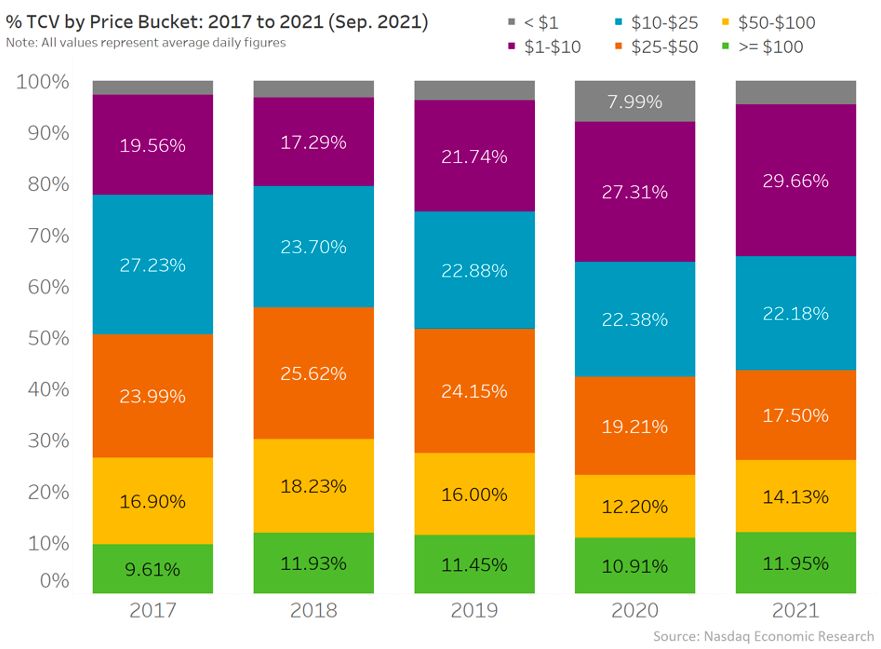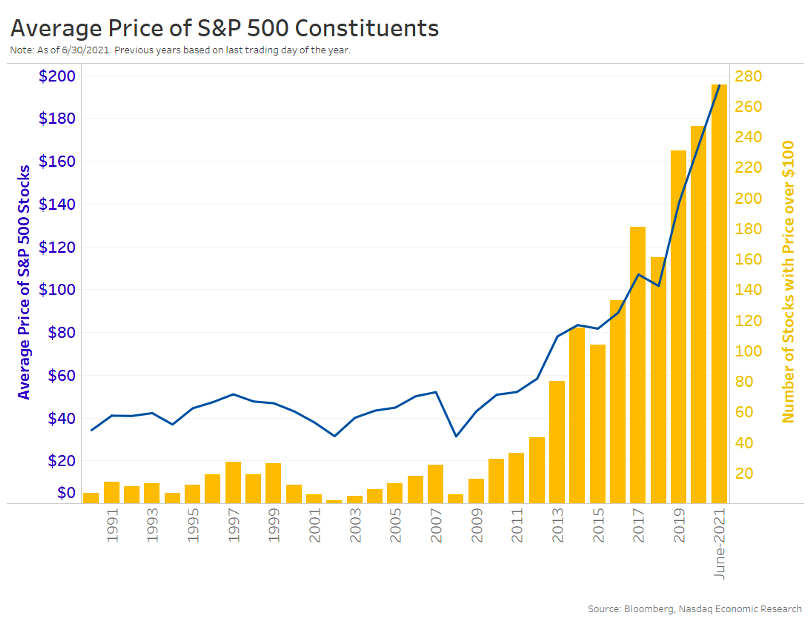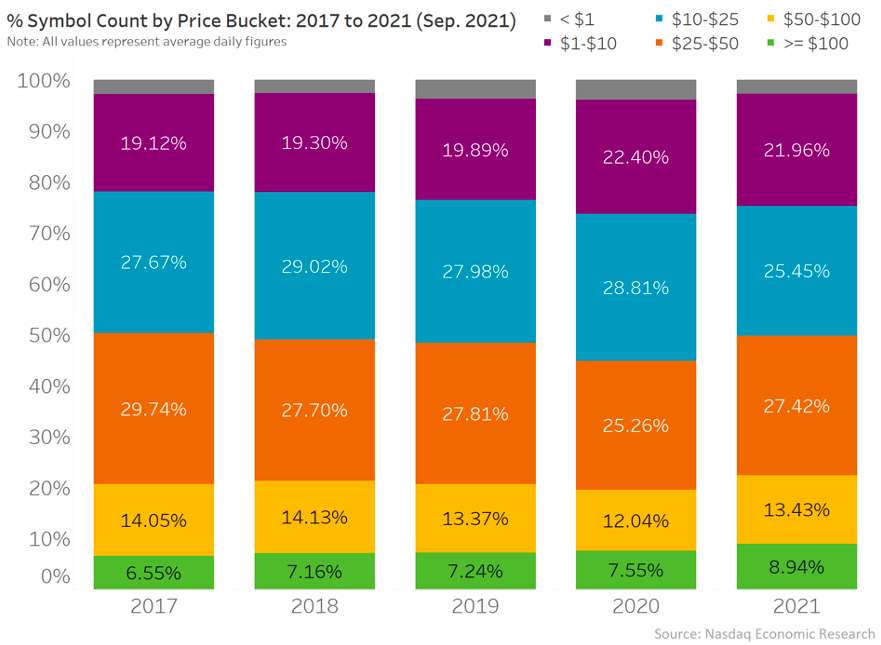
Despite Rising Prices, Low-Priced Stocks Are Trading More
Although stock prices are rising, the U.S. market is actually seeing more trading in stocks below $10. A deep dive into that trend explains a lot about how the market has changed over the past few years.
Low-priced stocks are trading more
Trading activity has increased significantly in the past two years. So have stock prices. But when we look at trading activity by stock price, we see more and more volume (ADV) is coming from lower-priced stocks.
In fact, the contribution to ADV from stocks with prices below $10 has grown by almost 10 percentage points over the past five years. Stocks priced under $25 make up over 56% of all trading.
Although interestingly, the high-priced stocks, those above $100, have also increased by over two percentage points.
The compression has come in stocks priced $25-$100.
Chart 1: Change in composition of stock trading over the past five years (by stock price)

Despite that, most stocks prices are rising, some by a lot
That’s pretty amazing when we look at the pattern of stock prices over the same period.
Thanks to market appreciation, combined with a reduction in stock splits, the (simple) average price of stocks in the S&P 500 has climbed from below $100 to almost $200 now (blue line and axis in Chart 2).
More significantly, more than half of the stocks in the S&P 500 are now priced over $100, up from less than 10% in the 1990s and 2000s.
Chart 2: But the market rally (and a reduction in stock splits) has pulled stock prices higher

An interesting question is how do these two opposing forces play out?
The count of the lowest- and highest-priced stocks have both increased
Obviously, over time some stocks will migrate between the stock baskets we have set. How much might that affect the results?
The data shows that rising stock prices have also added more than two percentage points to the number of stocks priced over $100.
However, there has also been a small increase in the number of low-priced (less than $10) stocks. Although at less than three percentage points, that explains only a fraction of total changes to liquidity in those stocks.
Interestingly, despite rising prices, the average price in each price bucket is fairly constant over this timeframe.
Chart 3: Count of stocks in each basket over time

It’s more likely that retail activity, which we’ve talked about recently, is contributing to boost trading in lower-priced stocks, as data suggests retail are often trading smaller-cap stocks.
It’s also worth remembering that lower-priced stocks need to trade more shares to add up to the same investment value. So looking at ADV will overstate the impact of these stocks on total investable liquidity.
Why is this important?
U.S. conventions focus, perhaps too much, on shares traded as a measure of liquidity. That’s because you need to trade a small-priced stock more to invest the same amount of money.
However, because share prices also tend to track market capitalization, with higher prices for larger companies, looking at changes in activity in price groups helps us see where liquidity is changing.
As we saw recently, liquidity hasn’t changed much for large-cap stocks. The gains in ADV are mostly coming from smaller-priced stocks in the smaller cap end of the U.S. stock market.
